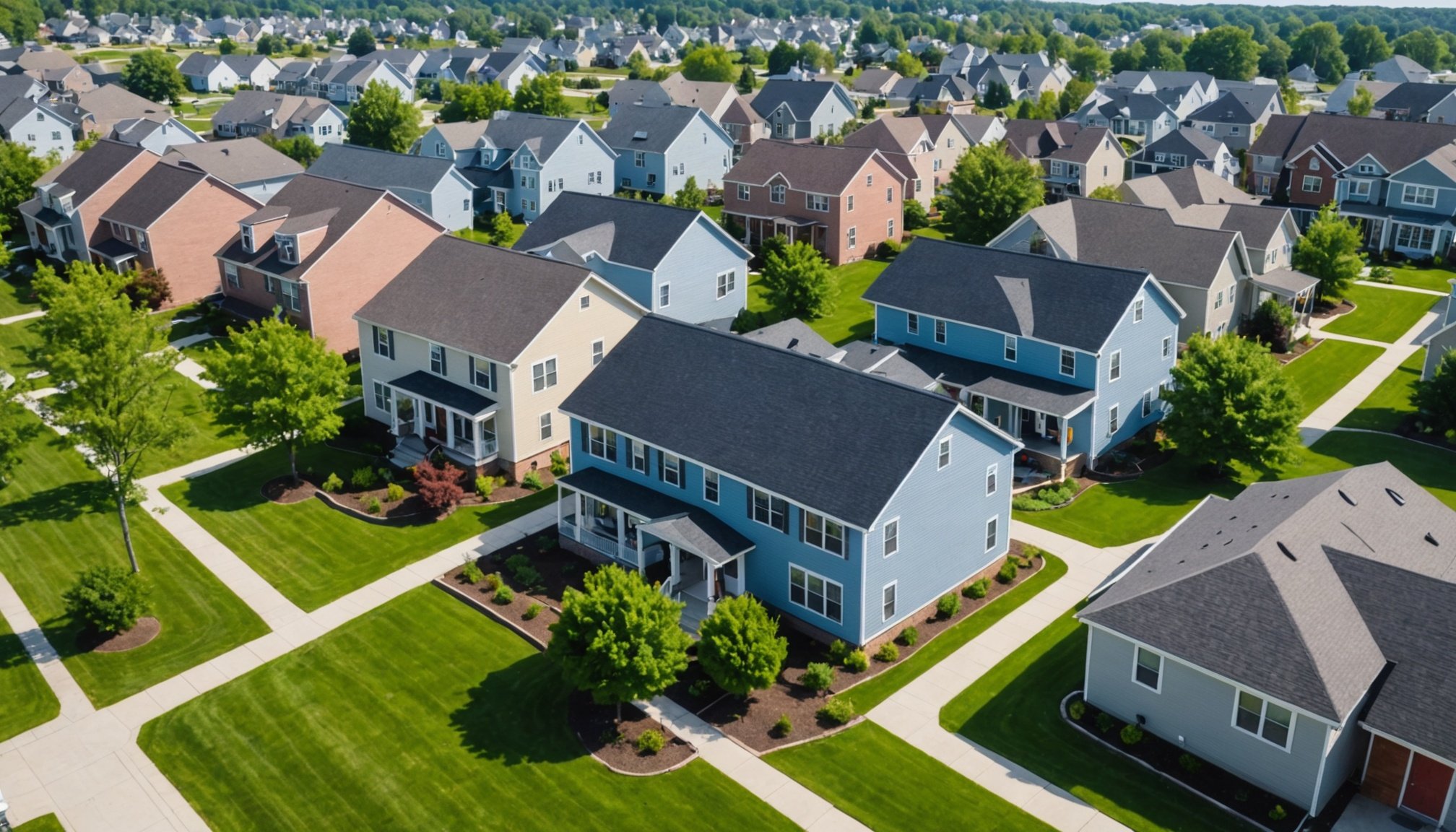Introduction to Cost-Effective Housing Solutions
Within the context of cost-effective housing solutions, the need for creative and sustainable approaches is paramount for addressing the housing crisis faced by many low-income families. As traditional methods often fall short, it becomes crucial to explore new pathways that not only reduce financial barriers but also offer long-term sustainability.
Innovative housing solutions focus on reducing construction and operational costs through modern techniques and methodologies. This involves optimizing materials, leveraging technology, and considering community-driven projects. Such efforts can reshape housing landscapes, making homeownership feasible for low-income families.
Also read : Unleashing innovative tactics to reduce water use in uk households
Sustainability plays a vital role in these strategies, emphasizing the use of eco-friendly components that minimize environmental impact while enhancing energy efficiency. Not only do these methods support ecological goals, but they also contribute to lower utility costs in the long run.
The development of cost-effective housing is rooted in collaboration among stakeholders, including government entities, private investors, and local communities. By fostering these partnerships, projects can tap into a diverse pool of resources and expertise, ensuring a comprehensive approach to housing challenges. Thus, the pursuit of cost-effective strategies in housing is about creating systems that support economic, social, and environmental well-being for low-income families.
Also to discover : Overcoming obstacles: essential challenges in brownfield property development
Future Trends in Affordable Housing
As technology continues to evolve, future housing trends are set to transform affordable housing landscapes. Advances in technology in housing drive efficiency and innovation, making sustainable living more accessible. Smart home systems, for instance, offer energy management solutions that reduce costs for residents. Moreover, digital platforms streamline property management and maintenance, enhancing operational efficiency.
Adaptive reuse demonstrates a significant potential in creating affordable living spaces. By repurposing existing structures, projects can minimize both environmental impact and construction costs. This approach not only preserves cultural heritage but also addresses urban density challenges. Successful case studies across major cities highlight adaptive reuse’s role in revitalizing communities through creative housing solutions.
Looking ahead, evolving housing strategies and policies are projected to focus on inclusivity and resilience. Embracing mixed-use developments that blend residential, commercial, and communal spaces supports vibrant, self-sustaining communities. Additionally, emphasis on mobility-friendly design and green spaces further enriches future housing trends.
In sum, the integration of cutting-edge technology, adaptive reuse practices, and forward-thinking policies are pivotal in reshaping affordable housing’s future. As these elements converge, they promise to foster environments that are not just cost-effective, but also socially and environmentally sustainable.
Utilizing Alternative Funding Sources
Amid mounting housing challenges, exploring alternative funding sources is pivotal for developing affordable solutions. Traditional financing often limits flexibility, especially for innovative housing developments aimed at low-income families. Non-traditional funding paths, such as crowdfunding and private investments, have gained traction due to their potential to mobilize diverse financial resources.
Crowdfunding offers an engaging platform for communities to rally support and capital for housing projects. By democratizing the funding process, it enables small contributors to invest, fostering a sense of communal ownership. However, crowdfunding presents challenges, such as inconsistent financial backing and the necessity for compelling project narratives to attract backers.
Private investments inject substantial capital into housing initiatives, driving large-scale development while addressing complexities through strategic partnerships. Successful case studies emphasize collaboration between developers and investors in aligning project goals and risk management. These investments have been instrumental in realizing ambitious housing objectives without over-reliance on limited public funds.
Balancing multiple funding streams helps mitigate individual risks, ensuring project sustainability. Notable examples showcase how leveraging these sources can overcome financial constraints, driving innovative solutions that address both immediate and long-term housing needs. By embracing these financial pathways, housing initiatives can share resources effectively and support vibrant, resilient communities.
Challenges and Solutions in Cost-Effective Housing Development
In the pursuit of cost-effective housing, housing development challenges frequently arise. These challenges often stem from policy barriers that can stall or complicate affordable housing initiatives. Current zoning laws and building codes sometimes hinder innovative projects, limiting the potential for low-income family housing solutions in areas that need it most.
Policymakers face the complex task of balancing regulation with innovation. Reforming these policies requires a nuanced approach that considers the broad spectrum of stakeholders involved. However, successful reforms have demonstrated that aligning policy with development goals can incentivize creative housing projects. For instance, relaxing zoning restrictions or offering tax incentives could stimulate the growth of affordable housing developments.
Amid these challenges, creative solutions have emerged to bypass such obstacles. Solutions like modular construction and prefabricated housing embrace technology to increase efficiency and reduce costs. These approaches not only make developments faster but also help in conserving resources, aligning with economic and environmental goals.
Furthermore, grassroots initiatives have highlighted the power of community-driven models. By leveraging local knowledge and resources, these initiatives address unmet housing needs effectively. As communities, developers, and policymakers collaborate, the potential for innovative, cost-effective housing solutions continues to grow.
Sustainable Building Practices for Low-Cost Housing
In the realm of low-cost housing, sustainable building practices are not just environmentally beneficial but crucial in reducing long-term costs. By integrating eco-friendly materials and principles of energy-efficient design, developers can craft homes that are cost-effective and environmentally friendly. These practices lead to significant reductions in utility expenses for residents, promoting both economic stability and ecological stewardship.
Innovative materials like cross-laminated timber (CLT) and recycled steel serve as excellent alternatives due to their sustainability and durability. These materials not only lessen environmental impact but also provide robust structural integrity. Energy-efficient technologies, such as solar panels and smart thermostats, further enhance homes by reducing energy consumption and lowering utility bills. Implementing such technologies ensures that housing developments meet both ecological and economic goals.
Case studies demonstrate the successful integration of green building practices. Projects worldwide have incorporated rainwater harvesting, passive solar design, and green roofs, resulting in reduced operational costs and increased sustainability. These examples illuminate the pathway towards more sustainable, low-cost housing solutions. By adopting these innovative practices, the housing sector can offer durable, affordable living spaces that benefit both communities and the environment in the long run.
Community Involvement and Support
Engaging communities is vital for successful housing solutions, especially in projects aimed at low-income families. Such involvement ensures that developments are tailored to meet the authentic needs of residents while also fostering a sense of ownership and responsibility.
Community engagement can take various forms, including resident input during the planning phases and involvement in project decisions. It allows for direct communication between stakeholders and community members, ensuring that the people most affected by housing solutions play a role in shaping them.
Volunteerism further enriches projects by bringing in diverse skills and efforts without escalating costs. Many housing initiatives thrive on volunteer-led efforts, harnessing local enthusiasm and dedication to achieve community goals. These initiatives often succeed due to the passionate support from individuals and non-profit organisations offering their time and resources.
Lastly, establishing local partnerships with businesses and civic groups can enhance resource-sharing strategies. These alliances provide crucial support in terms of materials, funding, and expertise. Community-driven projects with strong local ties tend to enjoy heightened success rates and sustainability, culminating in more resilient links between stakeholders and benefitting low-income families directly.
Innovative Approaches to Affordable Housing Development
In recent years, innovative housing developments have demonstrated transformative potential for creating accessible living spaces within communities. These approaches often feature alternative housing models that deviate from traditional construction methods. For instance, community-driven projects utilize local resources and insights to better align with the needs of low-income families. One notable example is the emergence of tiny home villages, which optimize space while providing essential amenities.
Case studies also highlight collaborative efforts where stakeholders collaboratively employ innovative design techniques. In Vancouver, a project utilized modular construction methods, significantly reducing build time and costs. Such techniques not only lower expenses but also provide demonstrated efficiency and adaptability, characteristic of successful community-driven housing projects.
The benefits of these collaborative efforts extend beyond cost savings. When multiple stakeholders, from local governments to non-profit organizations, pool resources and expertise, it results in more holistic solutions that address both immediate and future housing needs. By integrating new design strategies and fostering strong partnerships, alternative housing models create sustainable and inclusive communities, paving the way for broader adoption of these innovative developments in addressing housing crises effectively.











